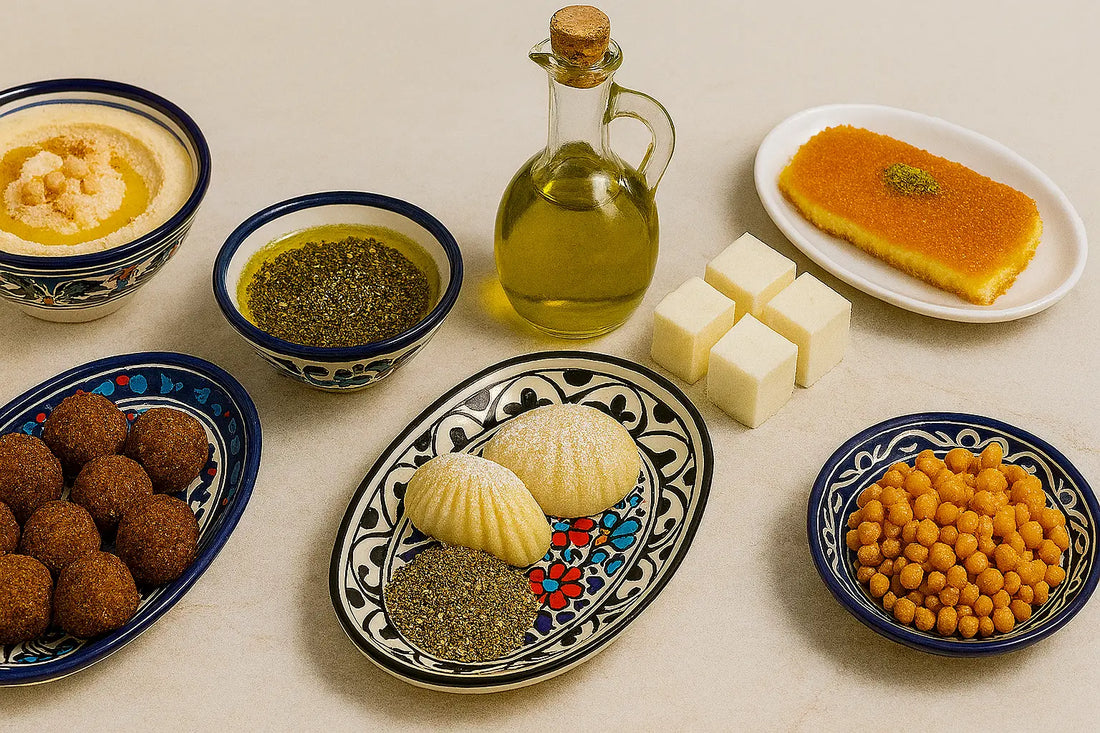What Do Palestinians Eat? Popular Dishes & Spices

Palestinian cuisine is not just food—it’s history served on a plate. It carries the essence of land, home, and community. If you’ve ever sat down to a Palestinian meal, you’ve likely experienced more than just rich flavors—you’ve tasted a story.
So, what do Palestinians eat? From comforting rice dishes to hand-rolled grains, slow-roasted meats, and zesty herbs, Palestinian cooking is diverse and deeply rooted in tradition. Here’s a closer look at what defines the everyday Palestinian table, from iconic dishes to beloved spices.
1.Maqluba: A Meal Turned Upside Down
One of the most recognizable dishes is Maqluba, which means "upside down." Imagine a pot layered with meat, vegetables (like cauliflower or eggplant), and spiced rice. Once cooked, the pot is flipped over onto a large platter, revealing a beautiful mosaic of textures and flavors. This dish is often served at family gatherings and doesn’t just fill the stomach—it brings people together.
2.Musakhan: A Love Letter to Olive Oil
At the heart of Palestinian kitchens is olive oil, and no dish celebrates it more than Musakhan. This meal features roasted chicken baked over caramelized onions and sumac, all spread across thick flatbread. The bread soaks up the oil and spices, creating something incredibly flavorful.
To truly experience Musakhan, quality olive oil is essential. Our Palestinian olive oil, cold-pressed and rich in color, captures the soul of this dish like nothing else.
3.Maftoul: Hand-Rolled Tradition
Often called “Palestinian couscous,” Maftoul is a special grain made by hand—each little ball rolled from bulgur and whole wheat flour. Unlike store-bought couscous, maftoul has a nutty flavor and a chewy, hearty texture. It's commonly cooked in broth with chickpeas and chicken and is especially comforting during cooler months.
Want to try it? We offer traditional maftoul here, made the old-fashioned way and full of character.
4.Mujaddara: Comfort in a Bowl
Some of the best Palestinian dishes are the simplest. Mujaddara, a humble combination of lentils, rice, and deeply browned onions, is as comforting as it is nutritious. It’s often paired with plain yogurt or a tomato-cucumber salad. Spiced gently with cumin, this dish reflects the earthy flavors of everyday cooking in Palestine.
5.Falafel & Hummus: Street Food with Soul
It’s hard to imagine Palestinian cuisine without falafel—golden, crispy fritters made from chickpeas, parsley, and spices. These are often eaten with fresh pita, pickles, and a drizzle of tahini. Alongside them, you’ll always find hummus, made from mashed chickpeas, lemon juice, and tahini. These foods are simple, but their place in Palestinian food culture is anything but small.
6.Knafeh: Sweet, Stretchy & Irresistible
If you’ve never tried knafeh, you’re in for a treat. This dessert is made from crisp shredded pastry and filled with melted cheese, then soaked in fragrant syrup. The contrast between salty and sweet is unforgettable.
To recreate that gooey magic at home, you’ll need the right cheese. Our Mashgolah Nabulsi cheese is traditionally used in knafeh and adds the perfect stretchy texture.
7.Maamoul: Cookies from Home
Maamoul are delicate semolina cookies filled with dates, pistachios, or walnuts. Often made during religious holidays, they’re formed using carved wooden molds, each with a different pattern depending on the filling. With a light dusting of powdered sugar, these cookies are a beautiful balance of sweetness and tradition.
8.Spices That Speak Volumes
The flavors of Palestinian dishes are defined not by heat but by depth. Common spices include:
- Zaatar – a mix of wild thyme, sumac, and sesame seeds. It’s sprinkled on bread, mixed with olive oil, or used as a seasoning on vegetables.
- Sumac – tangy and bright, perfect with onions and chicken.
- Cumin – earthy and grounding, often used with lentils or chickpeas.
- Allspice – warm and complex, featured in many rice and meat dishes.
-
Cinnamon & cloves – used subtly, especially in celebratory meals.
These spices aren’t just ingredients—they’re a direct link to the land and the past.
9.Serving the Experience
The presentation of food in Palestine is just as meaningful as the cooking. Meals are often served in beautifully hand-painted ceramic trays and jugs, many of which are crafted in Hebron. Each piece tells its own story—painted by hand, passed through generations.
Explore our full ceramic collection to bring that same tradition to your table, whether you’re plating olives, zaatar, or serving tea.
Final Words: Food as Memory
Palestinian cuisine isn’t just about recipes—it’s about memory, place, and love. Each dish connects you to generations who cooked before, to groves of olive trees and markets filled with spice. It’s food that nourishes more than just the body.
If you're curious about Palestinian cooking or want to introduce its flavors into your own kitchen, you're not just trying something new—you’re keeping a beautiful tradition alive.
You’ll find everything you need to start at Watany Palestinian Products.
